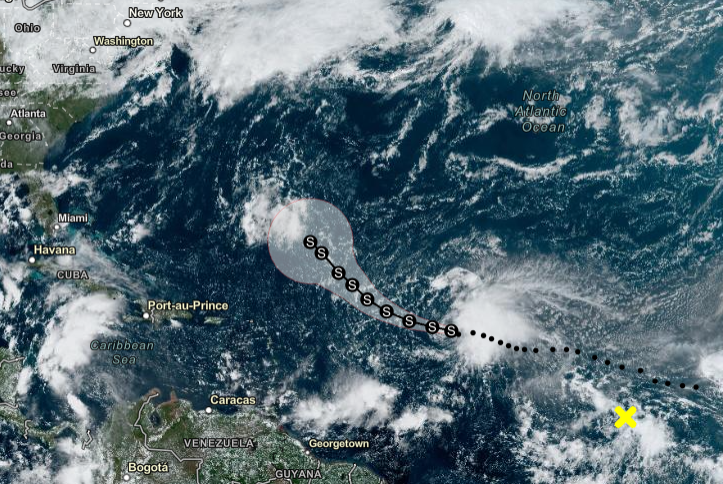Tropical Storm Philippe, another disturbance in the Atlantic Ocean, is projected to hit the United States after the weakened Tropical Storm Ophelia made landfall in North Carolina over the weekend.
According to the latest US weather forecast as of Monday, September 25, Philippe is currently far from any mainland territories; however, its trajectory points toward the US and North America in general.
There is currently no forecast if whether the latest Atlantic tropical storm will make any exact landfall site this week. However, the National Hurricane Center (NHC) shows Philippe is moving in a northwestward pattern and will continue to do so in the coming days.
During this period, island countries in the eastern Caribbean region and northeast South America may experience rainfall, strong winds, and storm surges.
Tropical Storm Philippe Path

The NHC as of Monday morning stated Tropical Storm Philippe has a maximum sustained wind of 50 miles per hour, moving at 13 miles per hour as a "tropical cyclone."
In its short-range forecast, the US hurricane monitoring agency shows on its map that the tropical storm will keep heading the direction of Bermuda and US East Coast.
Meanwhile, another forecast shows that although Philippe is currently in the open waters of the Atlantic, there are no concerns for any land or people, according to The Weather Channel Meteorologist Domenica Davis on Monday.
Will Tropical Storm Philippe Hit Florida?
Furthermore, a separate meteorological report shows Tropical Storm Philippe, the 16th named storm of 2023, is gradually strengthening, and is expected to turn north but away from land, including Florida, later this week.
Some of the factors contributing to the tropical storm's potential diversion from any mainland are winds that push them away.
In its initial forecast, the NHC issued a weather advisory that tells us the center of the strengthening tropical storm was located near latitude 17.4 North and longitude 43.9 West, moving in a west-northwest pattern at 10 miles per hour or 17 kilometers per hour.
Tracking Weather Systems
Aside from Tropical Storm Philippe, the NHC is tracking two weather systems that could pose a threat to the US and its surrounding region in the coming days.
One of these two systems is a low-pressure area with a 10% chance of cyclone formation in the next 48 hours, based on the agency's advisory as of 8:00 a.m. EDT (local time) on Monday.
On the other hand, the second system, with a 30% chance of also becoming a cyclone, is located between the coasts of eastern South America and West Africa, just behind Philippe.
Earlier this year, meteorologists from the National Weather Service (NWS) and National Oceanic and Atmospheric Administration (NOAA) have recorded above-normal sea surface temperature in the Atlantic Ocean. These temperatures contribute to tropical activity.
In late July 2023, the North Atlantic experienced a record-high average sea surface temperature of 24.9 degrees Celsius or 76.8 degrees Fahrenheit.
© 2025 NatureWorldNews.com All rights reserved. Do not reproduce without permission.





